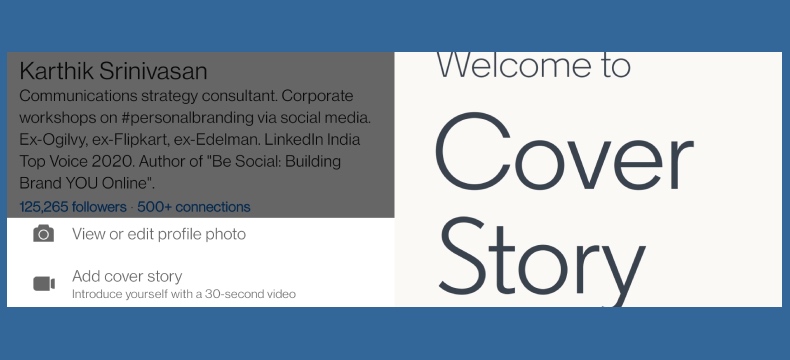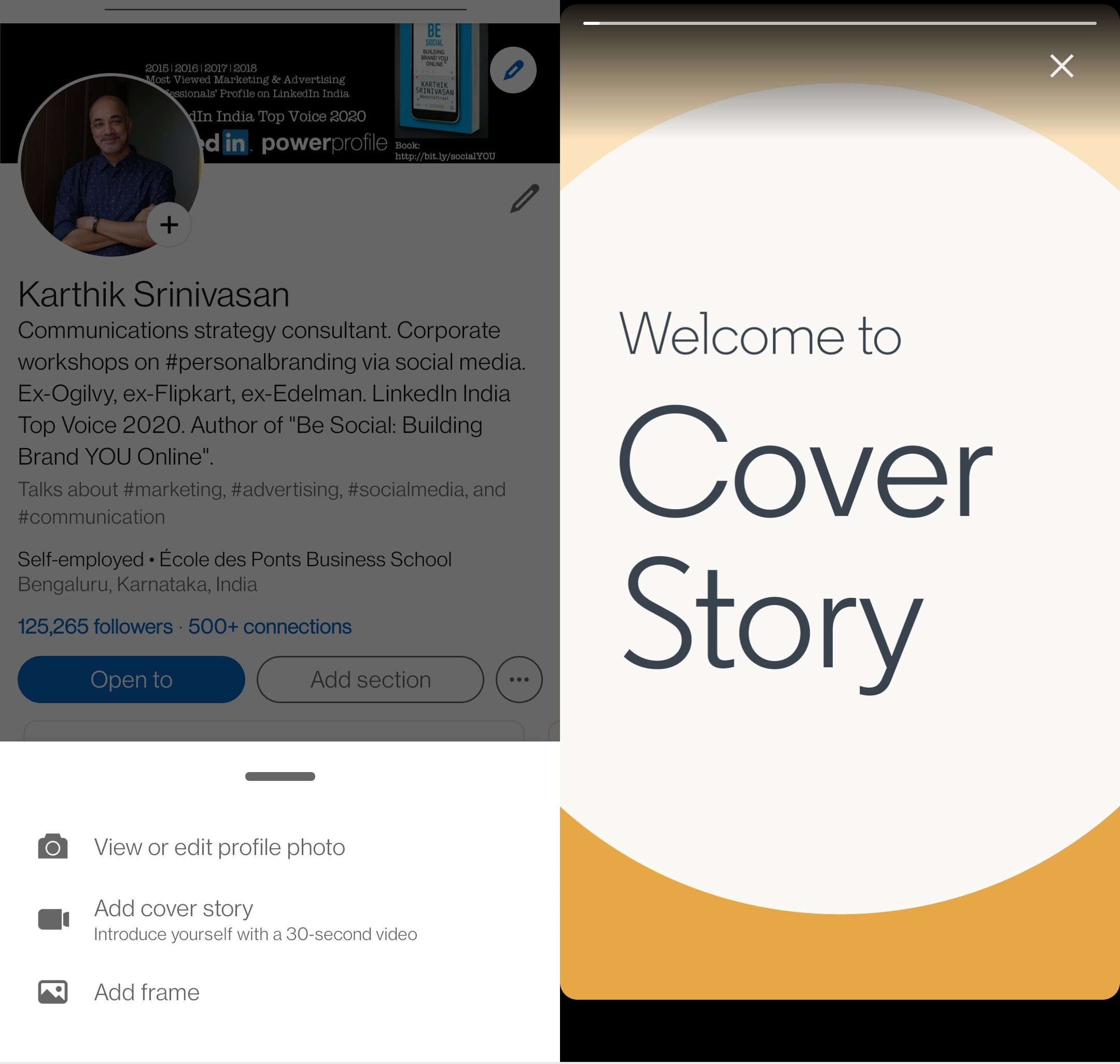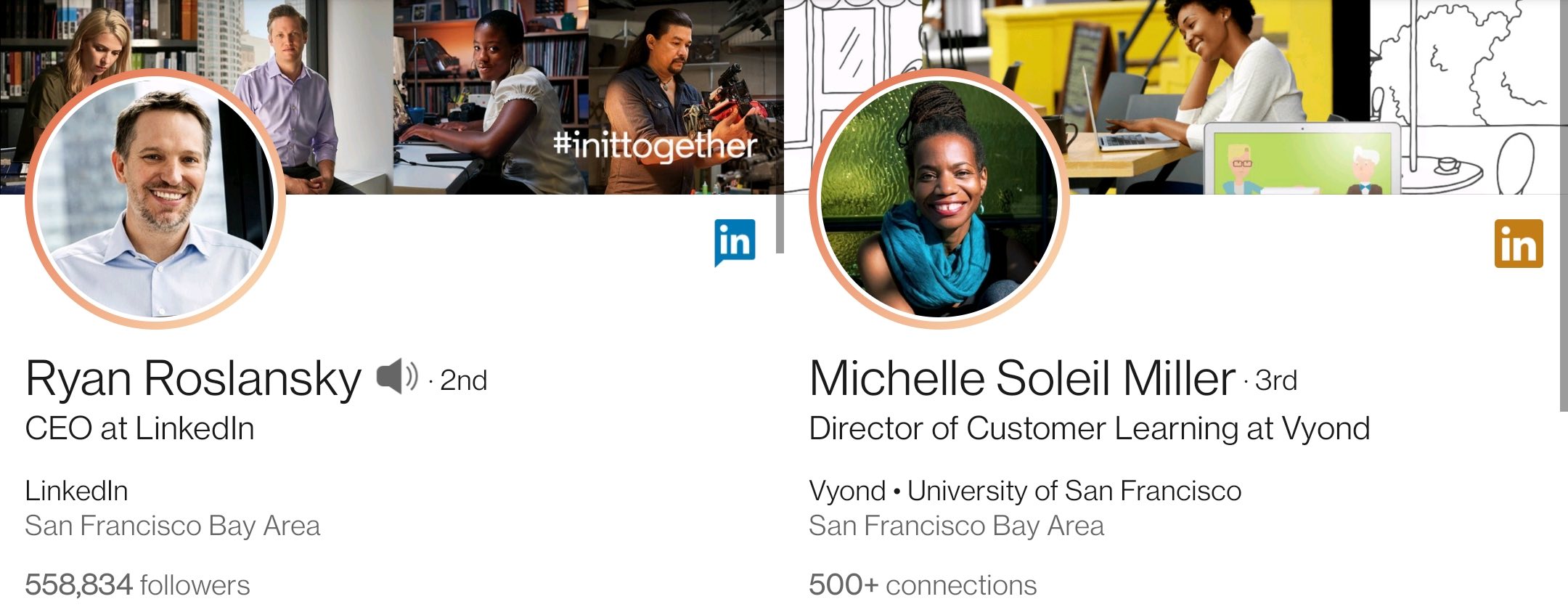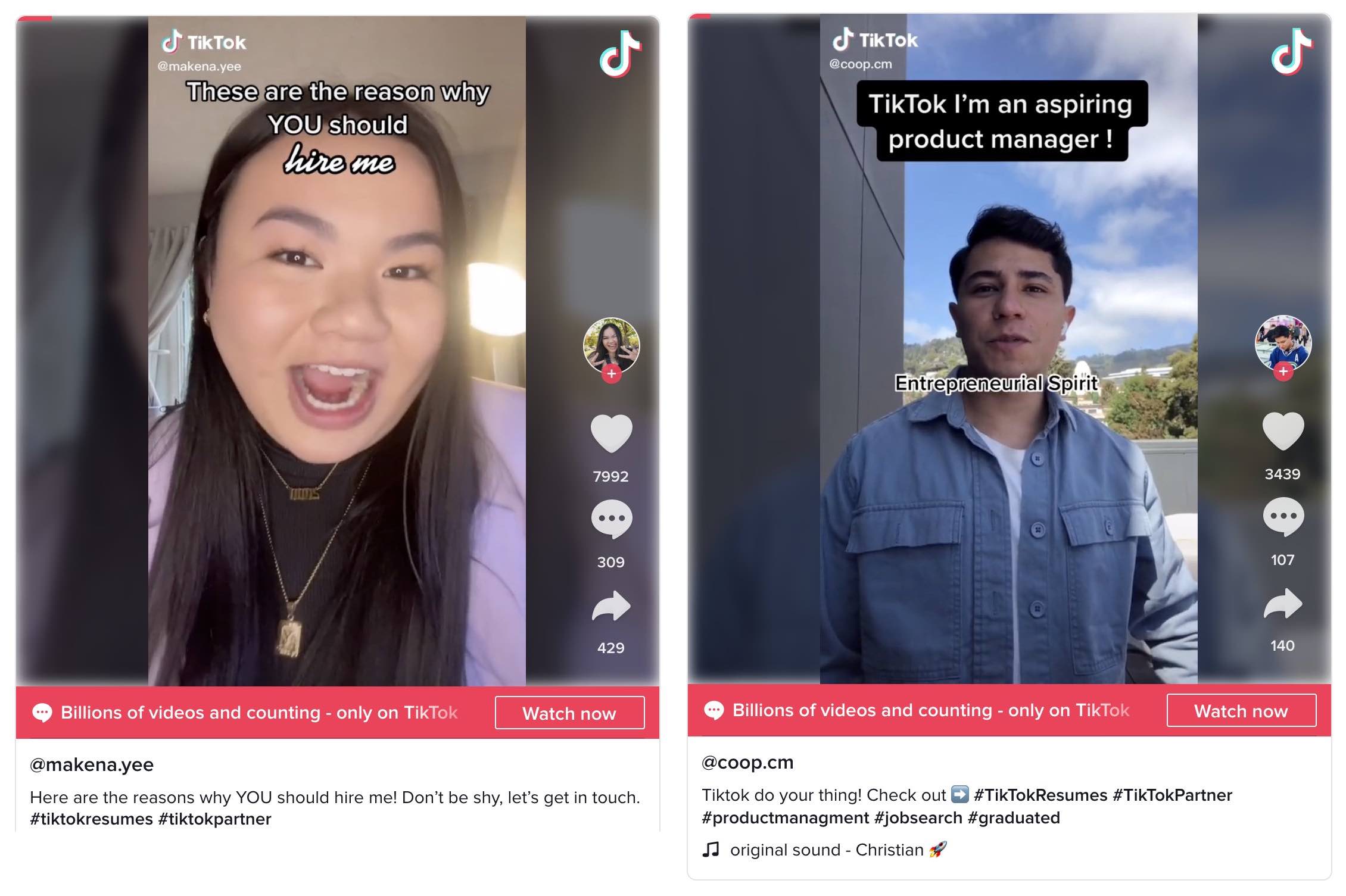
When you think of a resume, what comes to your mind?
Usually, it is a 2-page document in PDF or MS Word format. This has been the case for the longest time, and only in recent times has LinkedIn mildly substituted this format with an online professional profile. Of course, even if someone sends their LinkedIn profile URL, some recruiters may still seek an MS Word resume probably because they use some software that scans resumes for keywords that helps them shortlist from a lot of resumes.
This written-word resume is seeing early signs of marginal disruption in 2021.
Consider LinkedIn’s new feature called Cover Story that the platform launched in March 2021. The cover story creation works only via the LinkedIn mobile app, but the viewing could happen through any device.
When you go to your profile via the mobile app and click on the + sign on your display picture (dp), you get an option to add a 30-second vertical video introducing yourself.

If you have a cover story video on your profile, an orange ring would encircle your dp indicating to others that they can click on the dp to view your video (much like how you click on the dp on Instagram to view stories).
It’s a nice, new addition to LinkedIn profiles, but it is also something that augments an existing profile and doesn’t intend to replace it. The LinkedIn Cover Story is only a 30-second video, meant for quick consumption. So, at best, it could replace the cover letter one attaches to a resume. But then, the cover letter is usually customized based on the organization you are applying to, and a LinkedIn Cover Story seems too generic and broad-based for that purpose.
LinkedIn explains Cover Story as a feature that ‘lets you personalize your first hello’. So, in a way, this is the video version of a cover picture, then? But since it is a video, where a cover picture only offers an illusion of personalization, the cover story makes it truly personal.
Also, LinkedIn allows you to either shoot a selfie video or upload a video that you have produced as the cover story. Take a look at the 2 examples here – Ryan’s cover story is a selfie video where he simply talks to the camera, and Michelle’s cover story is a beautifully produced animated video about herself!

TikTok piloted a program called TikTokResumes in July 2021, in collaboration with 38 companies (like Target, Chipotle, Shopify, Abercrombie & Fitch Co., and Forever 21 among others).


The program invited users to post video resumes where they talk about why they should be hired, and the participating companies were asked to search by the hashtag, see the video resumes and make interview calls.
The program has been closed now and TikTok may perhaps initiate another episode soon.
The idea from TikTok is very different from LinkedIn’s Cover Story though the format used by both is video. TikTokResumes is a 60-second video clip where people use their best creativity to talk about themselves, with scrolling text and all the usual jazz TikTok is known for (LinkedIn says, in its introductory note to Cover Story, that captioning capabilities will be added soon though I notice they have already added options to add stickers).
Here’s a showcase of some of the resumes (from TikTok) and cover stories (from LinkedIn, using the following narrative styles – simple, selfie video; an edited showcase of work/interests/personality; a text-based banners-like cover story without featuring the person in-video; a motion-graphics professional using his own graphics to create a cover story, and an animated cover story!).
Compared to a written document, a video helps present the softer skills of candidates much better. Skills like verbal communication, presentation, or articulation are better represented on video, and this is usually demonstrated much later in the interview process when there is no video.
But the presence of video adds a lot of other problems. For instance, economically well-off candidates could really present a full-fledged production that presents them in the best light, while those who lack either the resources or the talent to perform in front of a camera could be seen as lacking. Similarly, some kinds of people may have an inherent advantage with videos – extroverts, and people who are very comfortable with sharing selfies may be better placed to utilize videos to augment their profiles.
Looking beyond the employment spectrum (jobs, candidates, recruitment, and so on), videos, on relevant platforms, also help professionals in personal branding. Here, TikTok is not necessarily a relevant platform because uses do not reside on the platform from an employment perspective, but the platform is enormously famous for making stars out of many, many nobodys, even in India when the platform was thriving here before the ban.
On LinkedIn too, the addition of videos augments personal branding possibilities tremendously. It’s one thing to passively read a bio on LinkedIn and entirely another to hear the person introduce herself via video!
This would naturally lead someone to ask me why I do not have a Cover Story yet on LinkedIn despite writing about it and despite being a voracious user of the platform 🙂
Oddly enough, while I’m quite comfortable in appearing in videos when it is shot by others, I’m rather fussy when I need to do it myself! To express myself, I prefer the written word, and I know that sounds outdated in the age of video proliferated by the massive accessibility of smartphones equipped with high-quality cameras. But the written word gives me the flexibility to write, edit, re-edit till I’m totally happy with the output. With video, not only do I need to script what I’m going to say but also look at the many nuances of presentability on a video meant for nobody in particular and to the entire world at once! I may still give it a shot… someday 🙂
But I think video introductions are here to stay and may take on a more active role in more online platforms than they are right now (restricted to TikTok and LinkedIn at this point). That TikTok is thinking on these lines with a pilot program says a lot about why it was ruling in India before the ban and how the many clones that thrive now in the absence of TikTok are several years behind in terms of innovative thinking.
I do foresee video resumes becoming more popular given the relative ease with which people can create videos effortlessly these days and the difficulty most people have with the written word’s articulation. Perhaps recruiters and recruitment tools too may catch up, using AI to watch and listen to video resumes, pick on body language and word cues to help them shortlist from a lot of videos!
